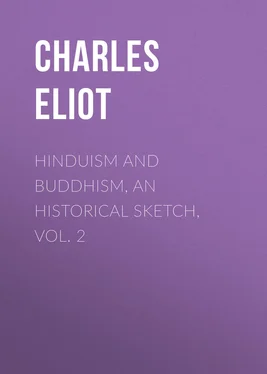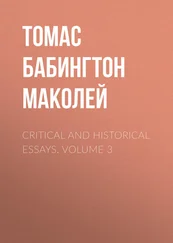Charles Eliot - Hinduism and Buddhism, An Historical Sketch, Vol. 2
Здесь есть возможность читать онлайн «Charles Eliot - Hinduism and Buddhism, An Historical Sketch, Vol. 2» — ознакомительный отрывок электронной книги совершенно бесплатно, а после прочтения отрывка купить полную версию. В некоторых случаях можно слушать аудио, скачать через торрент в формате fb2 и присутствует краткое содержание. Жанр: foreign_religion, Философия, Религиозная литература, foreign_psychology, foreign_antique, foreign_prose, на английском языке. Описание произведения, (предисловие) а так же отзывы посетителей доступны на портале библиотеки ЛибКат.
- Название:Hinduism and Buddhism, An Historical Sketch, Vol. 2
- Автор:
- Жанр:
- Год:неизвестен
- ISBN:нет данных
- Рейтинг книги:4 / 5. Голосов: 1
-
Избранное:Добавить в избранное
- Отзывы:
-
Ваша оценка:
- 80
- 1
- 2
- 3
- 4
- 5
Hinduism and Buddhism, An Historical Sketch, Vol. 2: краткое содержание, описание и аннотация
Предлагаем к чтению аннотацию, описание, краткое содержание или предисловие (зависит от того, что написал сам автор книги «Hinduism and Buddhism, An Historical Sketch, Vol. 2»). Если вы не нашли необходимую информацию о книге — напишите в комментариях, мы постараемся отыскать её.
Hinduism and Buddhism, An Historical Sketch, Vol. 2 — читать онлайн ознакомительный отрывок
Ниже представлен текст книги, разбитый по страницам. Система сохранения места последней прочитанной страницы, позволяет с удобством читать онлайн бесплатно книгу «Hinduism and Buddhism, An Historical Sketch, Vol. 2», без необходимости каждый раз заново искать на чём Вы остановились. Поставьте закладку, и сможете в любой момент перейти на страницу, на которой закончили чтение.
Интервал:
Закладка:
The Mahayanist Buddhism of the Far East makes free use of such phrases as the Buddha in the heart, the Buddha mind and the Buddha nature. These seem to represent such Sanskrit terms as Buddhatva and Bodhicitta which can receive either an ethical or a metaphysical emphasis. The former line of thought is well shown in Śântideva 117 117 E.g. Bodhicaryâvatâra, chap. I, called praise of the Bodhicitta.
who treats Bodhicitta as the initial impulse and motive power of the religious life, combining intellectual illumination and unselfish devotion to the good of others. Thus regarded it is a guiding and stimulating principle somewhat analogous to the Holy Spirit in Christianity. But the Bodhicitta is also the essential quality of a Buddha (and the Holy Spirit too is a member of the Trinity) and in so far as a man has the Bodhicitta he is one with all Buddhas. This conception is perhaps secondary in Buddhism but it is also as old as the Upanishads and only another form of the doctrine that the spirit in every man (antaryâmin) is identical with the Supreme Spirit. It is developed in many works still popular in the Far East 118 118 E.g. the Ṕu-t́i-hsin-li-hsiang-lun (Nanjio, 1304), translated from Nâgârjuna, and the Ta-Ch'êng-fa-chieh-wu-ch́a-pieh-lun, translated from Sthiramati (Nanjio, 1258).
and was the fundamental thesis of Bodhidharma, the founder of the Zen school. But the practical character of the Chinese and Japanese has led them to attach more importance to the moral and intellectual side of this doctrine than to the metaphysical and pantheistic side.
CHAPTER XX
MAHAYANIST SCRIPTURES
In a previous chapter I have discussed the Pali Canon and I shall subsequently have something to say about the Chinese and Tibetan Canons, which are libraries of religious and edifying works rather than sacred books similar to the Vedas or the Bible. My present object is to speak of the Sanskrit literature, chiefly sutras, which appeared contemporaneously with the rise of Mahayanism in India.
The Mahayanist scriptures are the largest body of sacred writings extant in the world, but it is not easy either to define the limits of the Canon or to say when it was put together. According to a common tradition Kanishka played for the Church of the Great Vehicle much the same part as Asoka for the Theravâdins and summoned a Council which wrote commentaries on the Tripitaka. This may be reasonably held to include a recension of the text commented on but we do not know what that text was, and the brief and perplexing accounts of the Council which we possess indicate not that it gave its imprimatur to Mahayanist sutras but that it was specially concerned with the Abhidharma works of the Sarvâstivâdin school.
In any case no Canon formed in the time of Kanishka can have been equivalent to the collections of writings accepted to-day in China and Tibet, for they contain works later than any date which can be assigned to his reign, as do also the nine sacred books revered in Nepal. It was agreed among Indian Buddhists that the scriptures were divided among the three Pitakas or baskets, but we may surmise that there was no unanimity as to the precise contents of each basket. In India the need for unanimity in such matters is not felt. The Brahmans always recognized that the most holy and most jealously preserved scriptures could exist in various recensions and the Mahabharata shows how generations of respectful and uncritical hearers may allow adventitious matter of all sorts to be incorporated in a work. Something of the same kind happened with the Pitakas. We know that the Pali recension which we possess was not the only one, for fragments of a Sanskrit version have been discovered.
There was probably a large floating literature of sutras, often presenting several recensions of the same document worked up in different ways. Just as additions were made to the list of Upanishads up to the middle ages, although the character of the later works was different from that of the earlier, so new sutras, modern in date and in tone, were received in the capacious basket. And just as the Puranas were accepted as sacred books without undermining the authority of the Vedas, so new Buddhist scriptures superseded without condemning the old ones. Various Mahayanist schools had their own versions of the Vinaya which apparently contain the same rules as the Pali text but also much additional narrative, and Asanga quotes from works corresponding to the Pali Nikâyas, though his doctrine belongs to another age. 119 119 In the Mahâyâna-sûtrâlankâra he quotes frequently from the Samyukta and Ekottara Âgamas, corresponding to the Samyutta and Anguttara Nikâyas of the Pali.
The Abhidharma section of the Pali Canon seems however to have been peculiar to the Theravâda school. The Sarvâstivâdin Pitaka of the same name was entirely different and, judging from the Chinese Canon, the Mahayanists gave the title to philosophic works by such authors as Asanga and Vasubandhu, some of which were described as revelations from Maitreya.
Specially characteristic of Mahayanist Buddhism are the Vaipulya 120 120 A reading Vaitulya has also been found in some manuscripts of the Lotus discovered at Kashgar and it is suggested that the word may refer to the sect of Vetullas or Vetulyakas mentioned in the Commentary on the Kathâvatthu as holding that the Buddha really remained in the Tushita heaven and sent a phantom to represent him in the world and that it was Ânanda, not the Buddha, who preached the law. See Kern, Vers. en Med. der K. Ak. v. Wetenschappen, Letterk. , R. 4 D. VIII. pp. 312-9, Amsterdam, 1907, and De la Vallée Poussin's notice of this article in J.R.A.S. 1907, pp. 434-6. But this interpretation does not seem very probable.
sutras, that is sutras of great extension or development. These works, of which the Lotus is an example, follow the same scheme as the older sutras but are of wider scope and on a much larger scale, for they often consist of twenty or more chapters. They usually attempt to give a general exposition of the whole Dharma, or at least of some aspect of it which is extolled as sufficient for the right conduct of life. The chief speaker is usually the Buddha, who is introduced as teaching on the Vulture Peak, or some other well-known locality, and surrounded by a great assemblage many of whom are superhuman beings. The occasion of the discourse is commonly signalized by his sending forth rays of light which illuminate the universe until the scene includes other worlds. As early as the Anguttara Nikâya 121 121 IV. 160. 5.
we find references to the danger of a taste for ornate and poetic sutras and these compositions seem to be the outcome of that taste. The literary ideas and methods which produced them are illustrated by the Sûtrâlankâra of Aśvaghosha, a collection of edifying tales, many of which use the materials supplied by the Pali Nikâyas and Vinaya but present them in a more effective and artistic form. It was thought a pious task to amplify and embellish the simple narratives handed down by tradition.
The Mahayanist scriptures are composed in Sanskrit not in Pali, but it is only rarely—for instance in the works of Aśvaghosha—that Buddhist Sanskrit conforms to the rules of the classical language. Usually the words deviate from this standard both in form and meaning and often suggest that the text as we have it is a Sanskritized version of an older work in some popular dialect, brought into partial conformity with literary usage. In the poetical portions, this process of sanskritization encountered greater difficulties than in prose, because metre and prosody often refused to admit the changes required by grammar, so that this poetical dialect cannot be called either Sanskrit, Pali or Magadhi but remains a mixture of learned and popular speech. But Sanskrit did not become a sacred language for the Mahayanists like Latin for Roman Catholics. It is rather Pali which has assumed this position among the Hinayanists, for Burmese and Sinhalese translations of the Pitakas acquired no authority. But in the north the principle 122 122 See Cullavagga, V. 33. The meaning evidently is that the Buddha's words are not to be enshrined in an artificial literary form which will prevent them from being popular.
that every man might read the Buddha's word in his own vernacular was usually respected: and the populations of Central Asia, the Chinese, the Tibetans, and the Mongols translated the scriptures into their own languages without attaching any superstitious importance to the original words, unless they were Dhâraṇîs or spells.
Интервал:
Закладка:
Похожие книги на «Hinduism and Buddhism, An Historical Sketch, Vol. 2»
Представляем Вашему вниманию похожие книги на «Hinduism and Buddhism, An Historical Sketch, Vol. 2» списком для выбора. Мы отобрали схожую по названию и смыслу литературу в надежде предоставить читателям больше вариантов отыскать новые, интересные, ещё непрочитанные произведения.
Обсуждение, отзывы о книге «Hinduism and Buddhism, An Historical Sketch, Vol. 2» и просто собственные мнения читателей. Оставьте ваши комментарии, напишите, что Вы думаете о произведении, его смысле или главных героях. Укажите что конкретно понравилось, а что нет, и почему Вы так считаете.












